“This pie crust is so good that it makes anyone who uses store bought pie crust look like someone who doesn’t know how to make pie crust.” – Michael Tyler Frederickson.
Nicely said! Added bonus, when you make this pie dough you know exactly what goes into it. And it doesn’t include Yellow 5 or Red 40 or preservatives. Unless you’re into that thing. In which case this recipe will not help. But for the rest of us, let’s begin.
You’ll need:
1 stick (8 tbs) cold butter
1 cup flour, sift before measuring – this part is really important for consistent results! It minimizes differences in the amount measured due to how tightly the flour is packed.
1 tsp kosher salt
1 tbs apple cider vinegar - makes the crust more tender and relaxes the gluten formed while mixing.
Up to 1/3 cup of water, added 2 tbs at a time.
Step 1: Place the flour and salt in a mixing bowl and add the butter, cut in slices. Mix the flour/salt and butter together using just your fingers. Don’t use your whole hand to do the mixing since your palms are usually pretty warm and you want to keep the butter as cold as possible. Mix until most of the flour has at least some butter on it but there are still some large chunks of butter hanging around. Those big pieces are essential to lovely flaky layers so err on the side of undermixing.

Step 2: Add the vinegar and then add water a few tablespoons at a time until the flour comes together into a dough. It should all stick together but it shouldn’t stick to the bowl or to your hands when you press it.
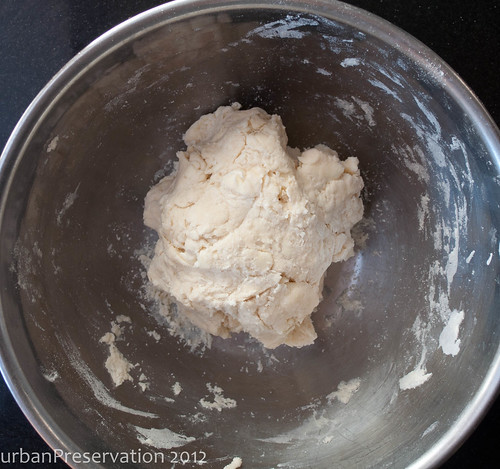
Step 3: Place the dough on a piece of plastic wrap and flatten it with your hands into a disc about 6 inches across. This can also be a last minute check for stickiness. If the dough sticks to your fingers when you press it out, sprinkle it with a little extra four, then wrap it up. Let the dough rest for at least 30 minutes. You can even make the dough a few days ahead and leave it in the fridge or freeze it for up to a month before using.
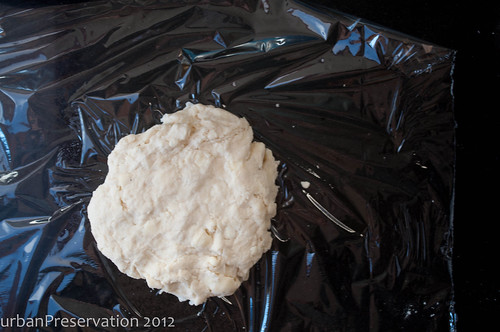
Step 4: Roll it out so that it’s about an inch or two bigger than your pie pan on all sides. This part will be important for sealing the top crust or making a pretty crimped edge. And those lovely big pieces of butter in the dough? Those are going to make some nice flaky pastry!
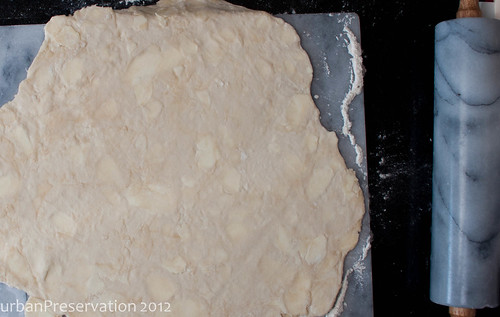
Step 5: The best way I’ve found to transfer dough is sprinkle extra flour on top, fold it into quarters, then place it so the tip of the triangle is in the center of the pie pan and unfold. Works like a charm.
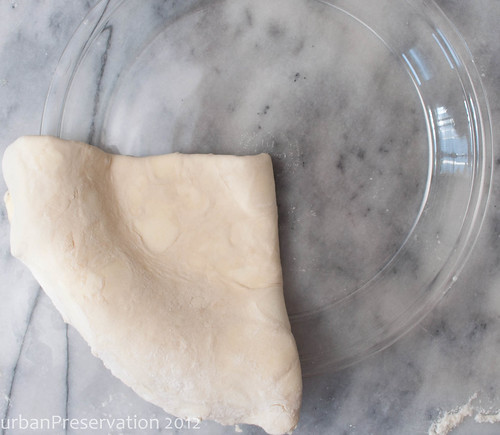
Bonus step: Crimp the edges by folding that extra inch of dough under so you now have a double layer of dough on the rim of the pie pan with the edge hidden under the dough. If some areas of the dough are longer, rip that piece off and use it to patch a shorter piece. To get that traditional crimp place your index finger and middle finger on the outer edge of the dough about a half inch apart and your thumb on the inner edge of the dough between them. Pinch lightly. Now move your index finger to the indent made by your middle finger and repeat. End result, a beautifully crimped edge.
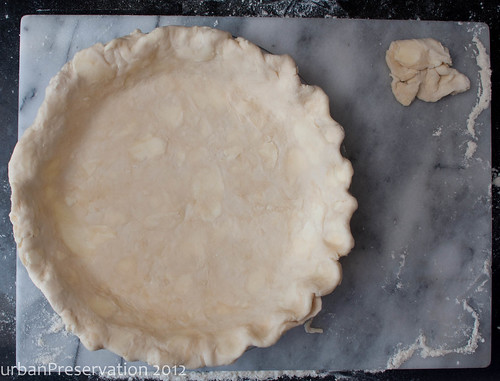
Use with your favorite pie recipe. Also with your second favorites. Try this one. Wow your friends. Tell them, “It was easy.” Right?
Does the vinegar do the same thing the vodka does? I could stop buying vodka if it does.
ReplyDeleteYes, the vinegar has pretty much the same end result as vodka. Vinegar is used to relax any gluten that may form during mixing while the vodka is used to decrease gluten formation in the first place since gluten won't form in alcohol.
ReplyDelete